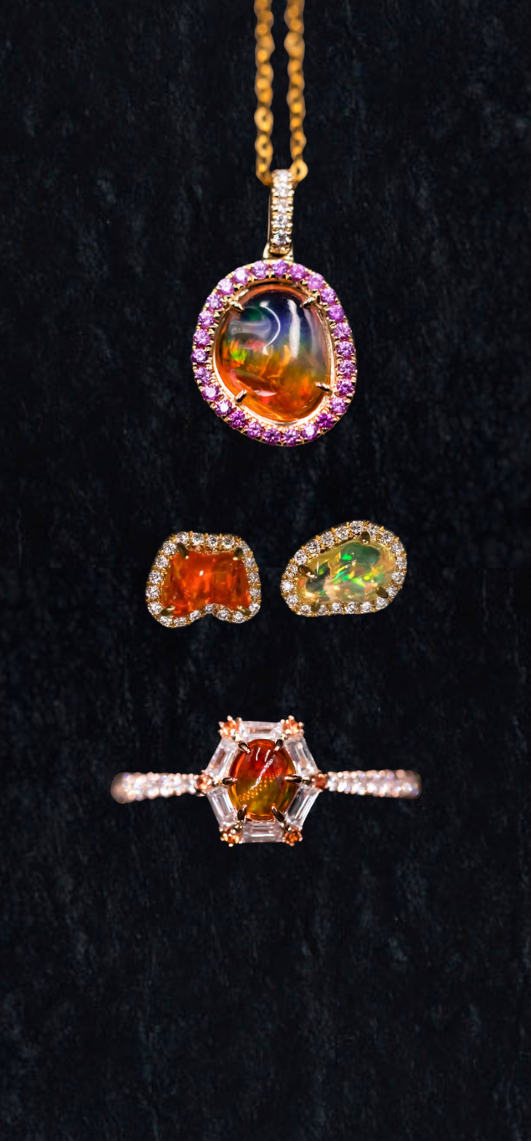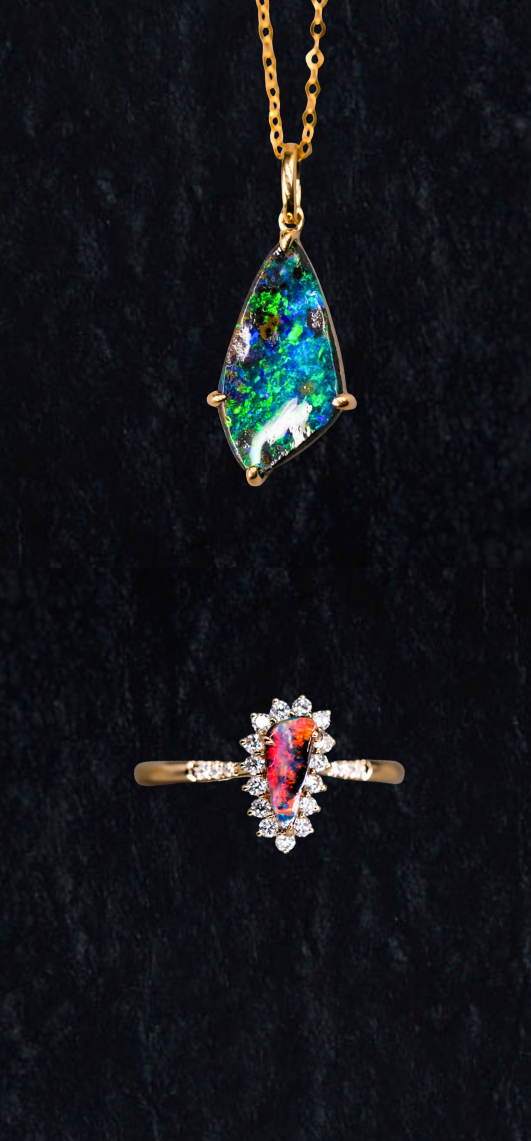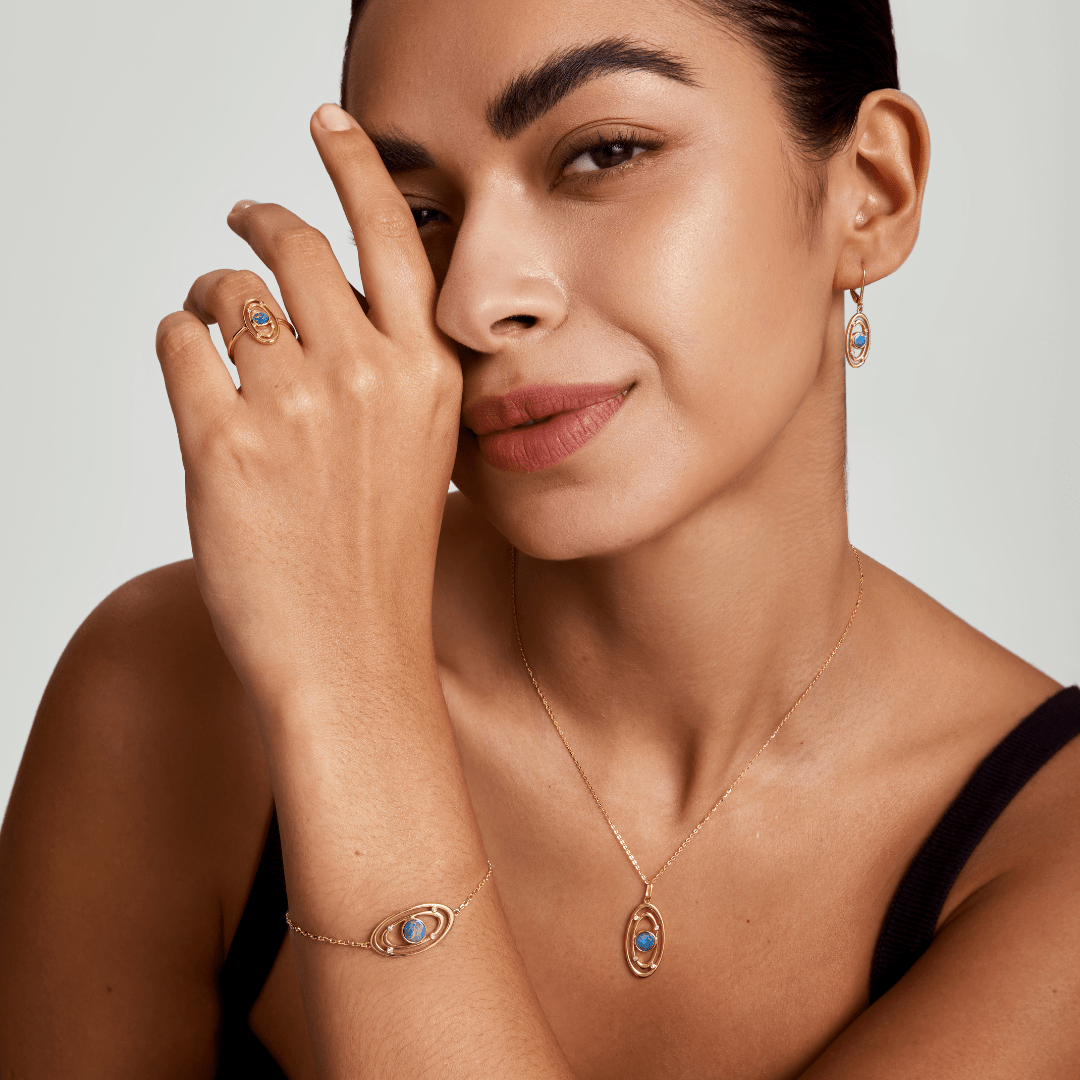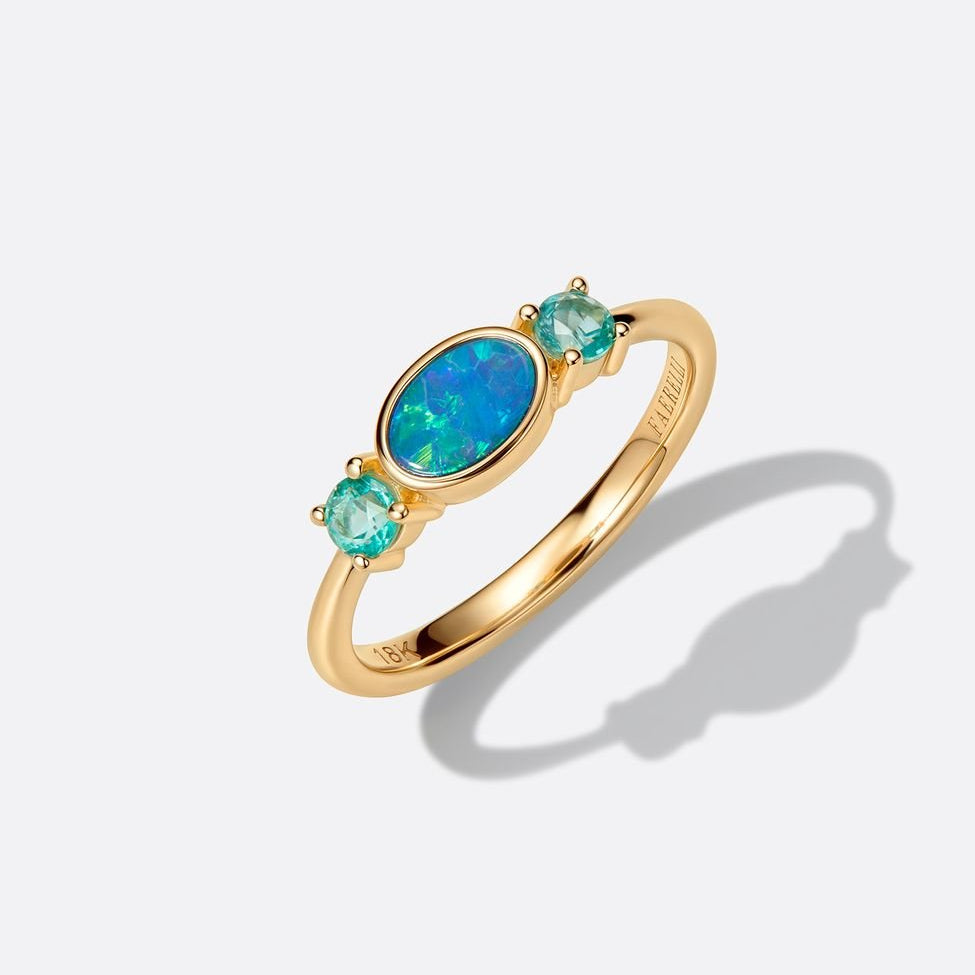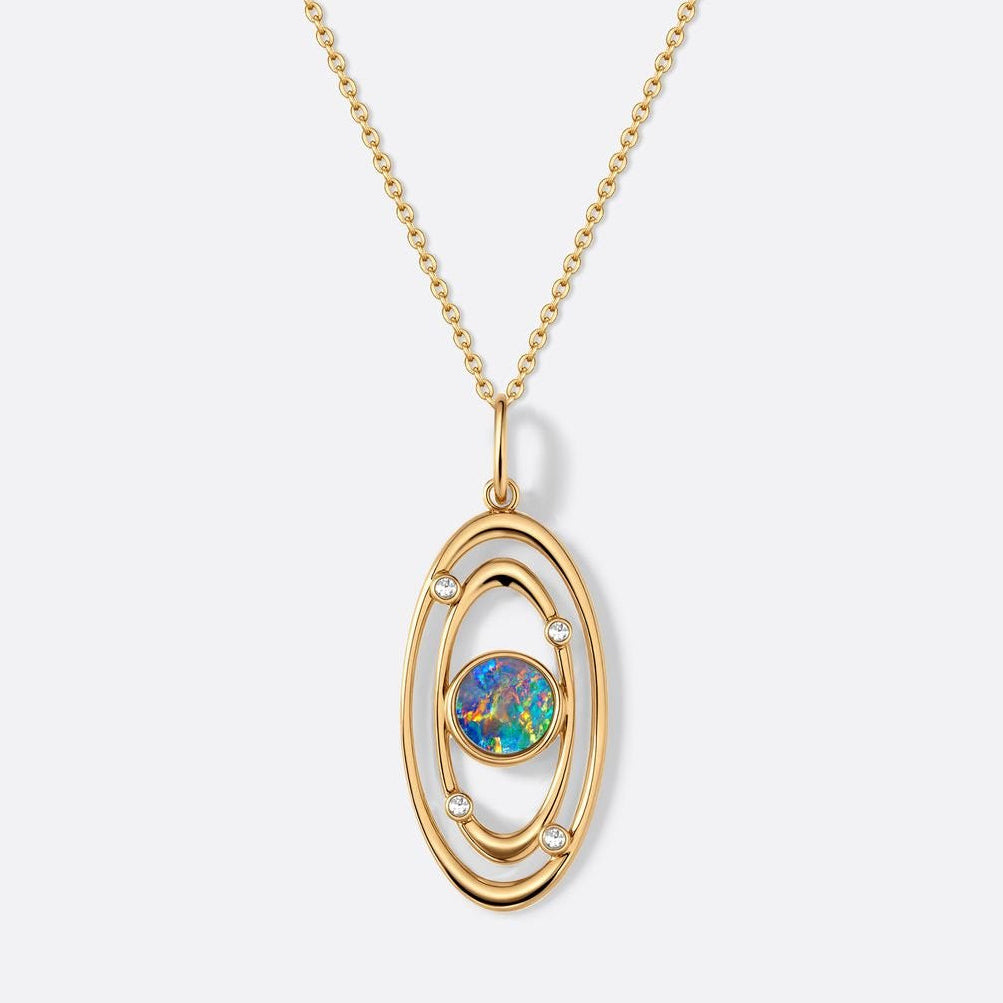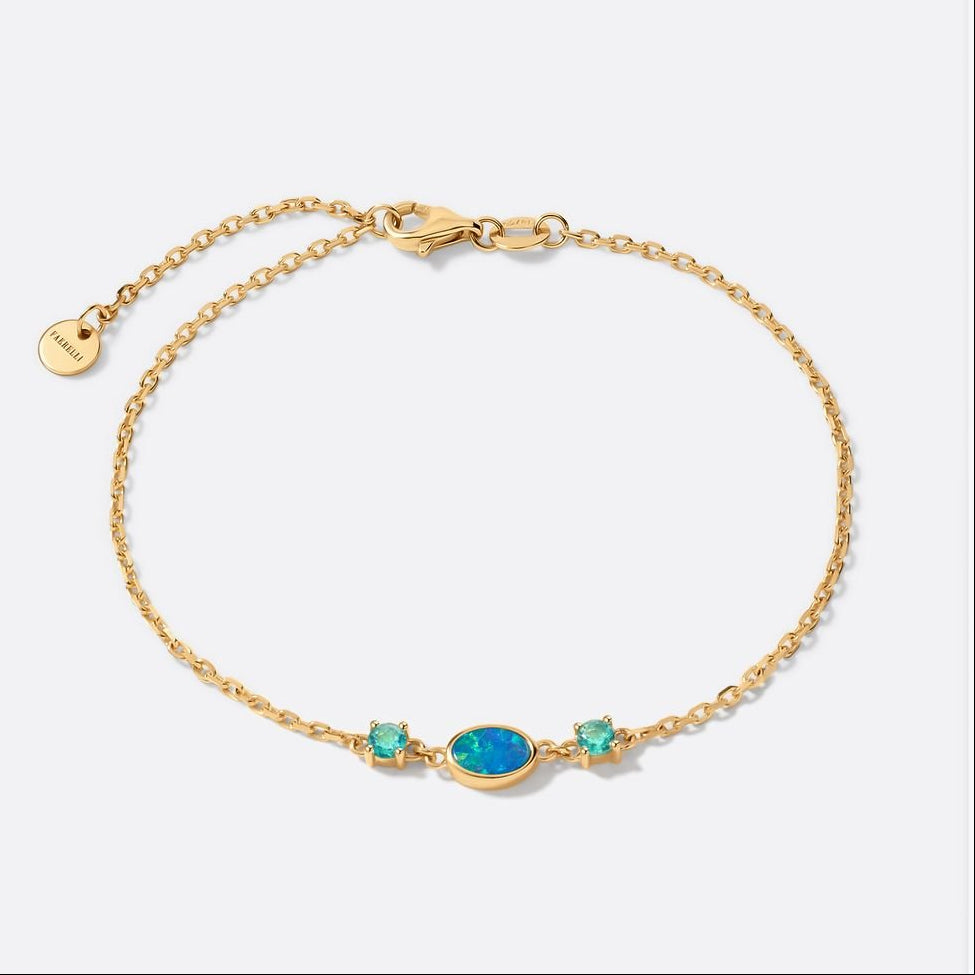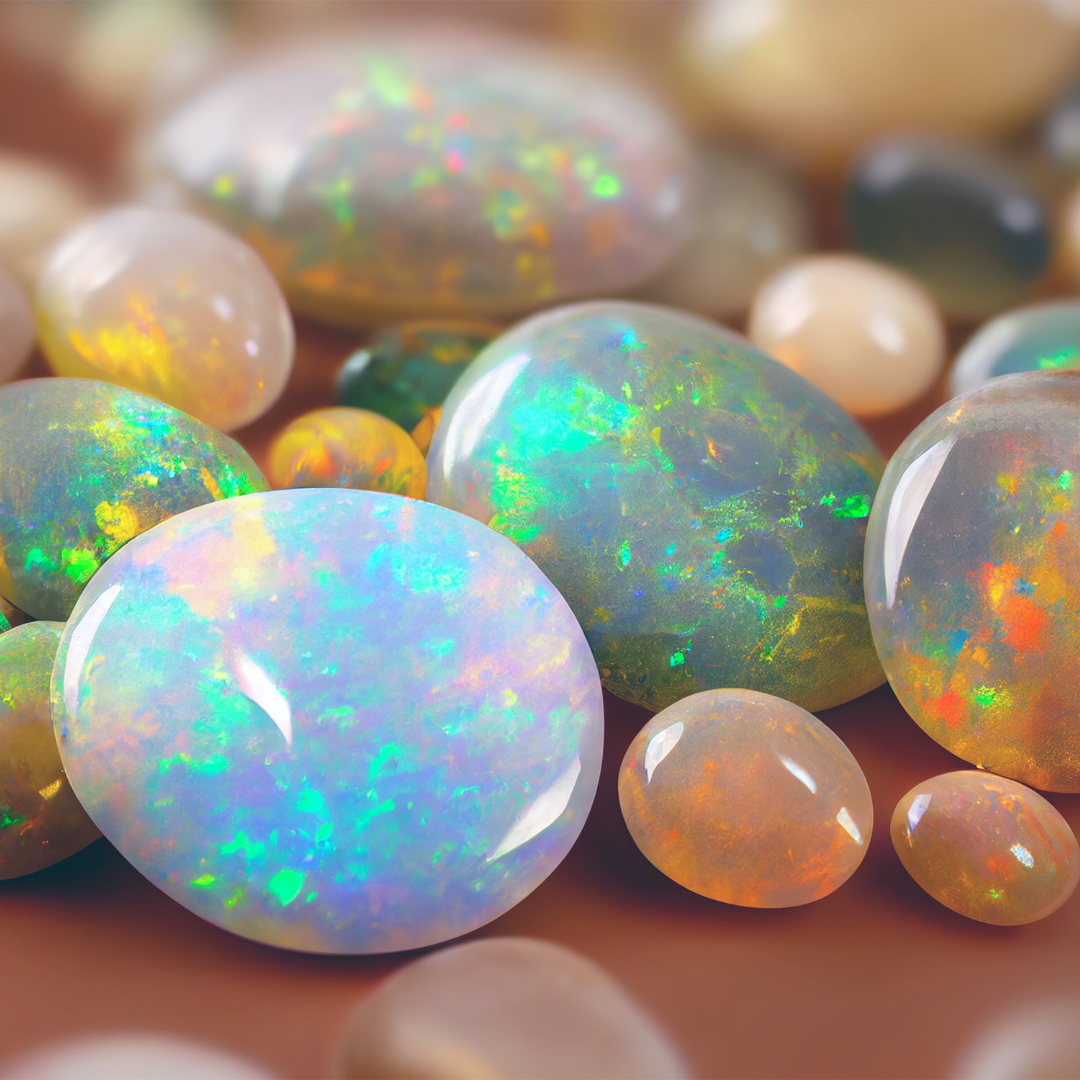
Opals and their History
A journey through the fascinating history of a unique gemstone
Opals are more than just gemstones; they are a symbol of beauty, mysticism and elegance. Their dazzling colors have fascinated mankind for thousands of years. In this article we take you on a journey through the history of opals , from the definition of the term "opal" to the first finds in ancient times to their role in the modern jewelry industry.
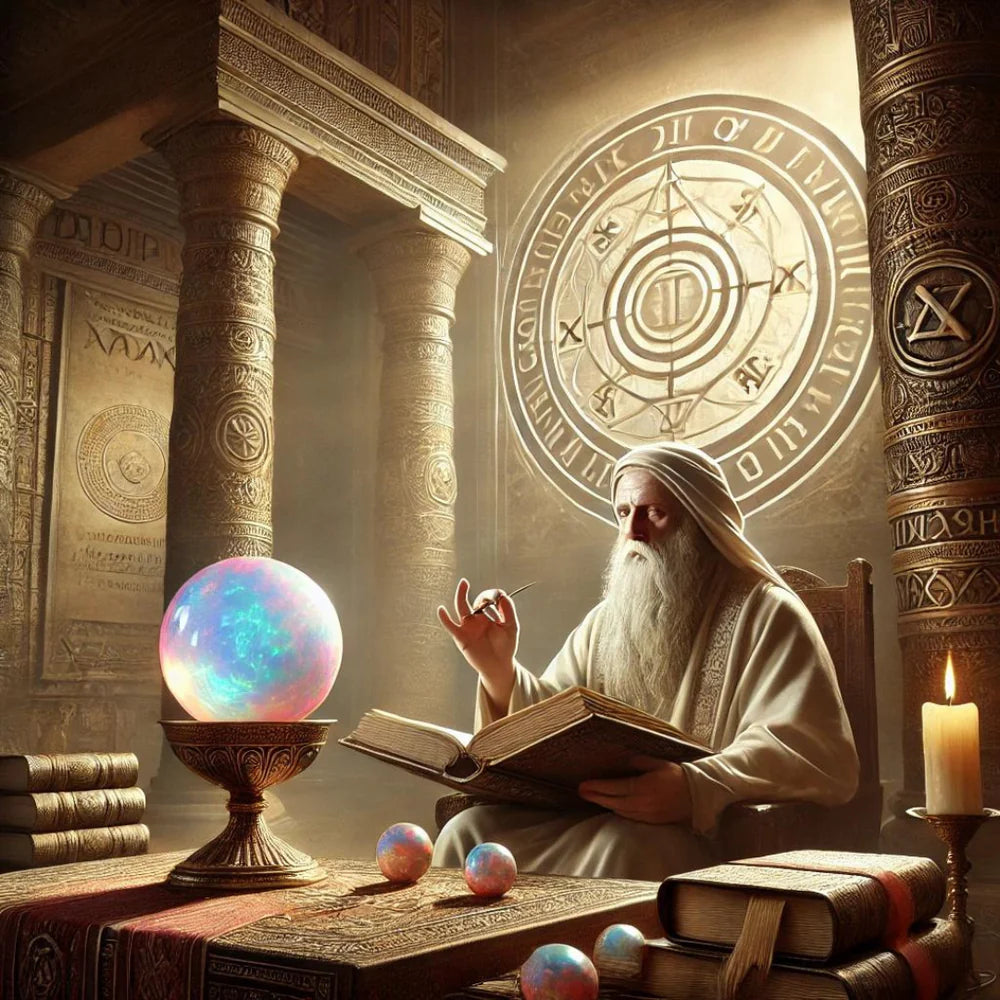
The origin of the term "opal"
From Latin to Greek to Old Indian
The name "opal" has a long and interesting history. It comes from the Latin word "opalus", which is derived from the Greek "opallios", meaning "to see" or "to change" . It is believed that the term originally comes from the Sanskrit word "upala", which means "gemstone" . This meaning is perfectly reflected in the nature of the opal, whose colors are constantly changing depending on the light and the angle at which it is viewed.
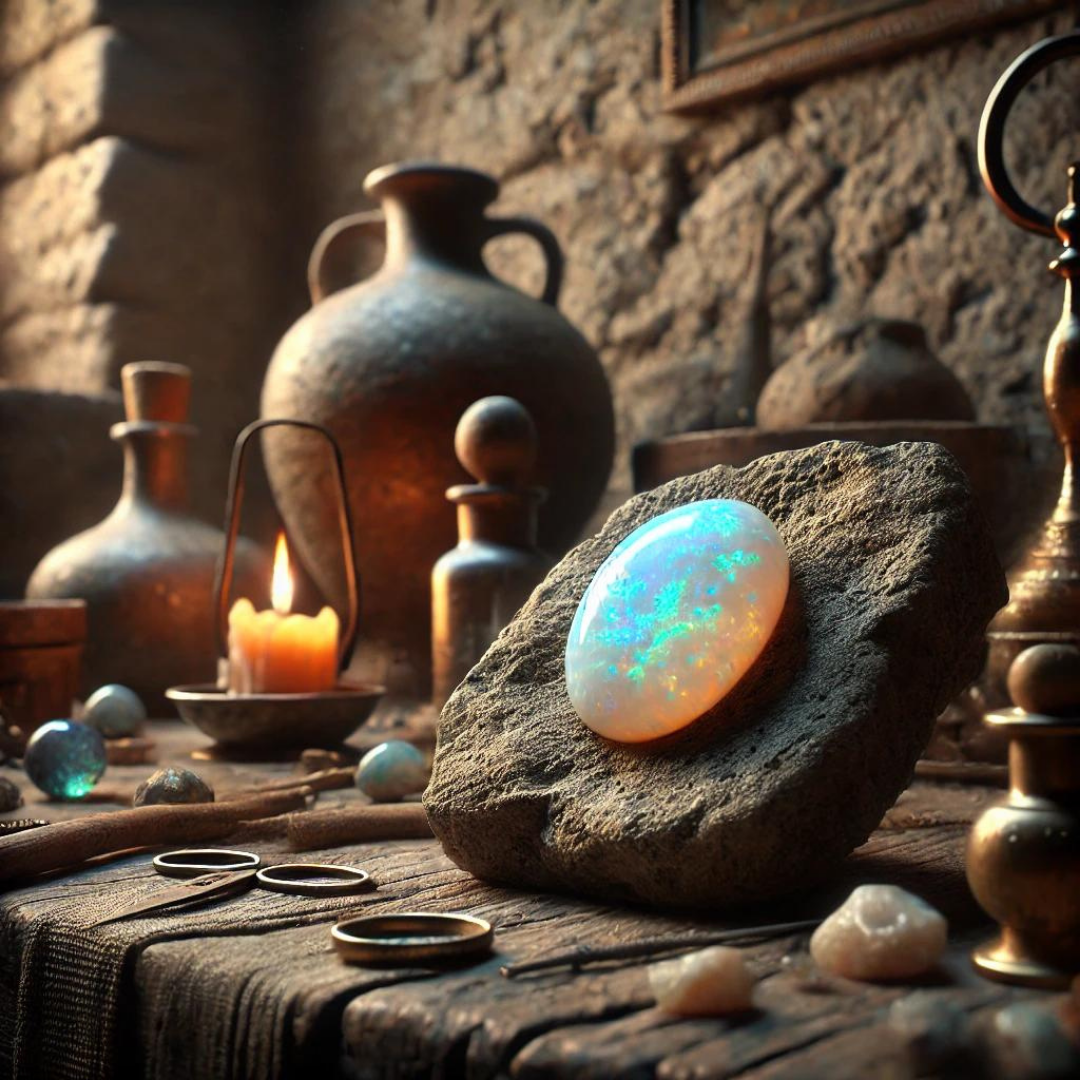
Opals in Antiquity
ca. 500 BC – 400 AD - from the Romans to the Greeks
The history of opals begins in ancient times, where they were highly prized by Romans and Greeks. The Romans considered opals to be the most valuable of all gemstones, believing that this stone combined the power of all other gemstones. In Roman times, many of the prized opals were imported from what is now Slovakia, then part of the Roman Empire. This region, which later became the home of the famous Hungarian opals, was considered one of the main sources of high-quality opals in ancient times. In Greek mythology, opals were associated with Zeus, who was said to have created them after a victory over the Titans. These early civilizations saw opals as a sign of hope and purity, and they were considered a powerful amulet against disease and misfortune.

The Middle Ages
ca. 500 – 1500 AD - and superstition: Opals as lucky charms and bad luck charms
During the Middle Ages, the perception of opals changed drastically. While some continued to believe in the stone's positive powers, superstitions developed that opals could bring bad luck. This negative view was partly reinforced by Sir Walter Scott's famous novel "Anne of Geierstein," in which an opal was portrayed as a cursed stone. Despite this ambivalent perception, opals remained a sought-after commodity, especially in the royal circles of Europe.
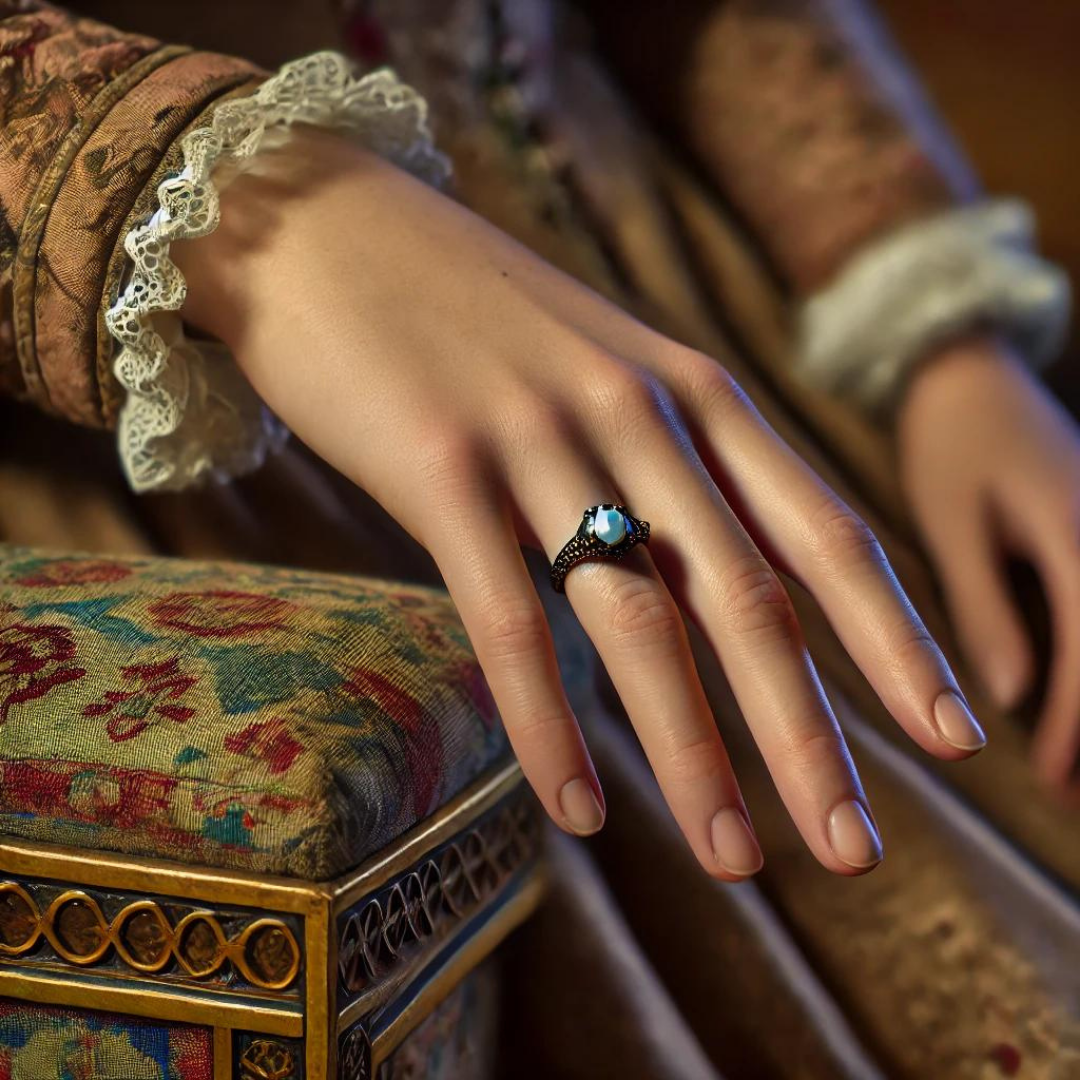
The Renaissance
ca. 1300 – 1600 AD - and the rediscovery of opals
The Renaissance brought a rediscovery of the beauty of opals. Artists and nobles of this era once again appreciated the gemstone for its unique colors and mysterious aura. Famous people, such as Queen Elizabeth I, were often depicted wearing opal jewelry, which led to a renewed popularity of the stone. During this period, opal was also increasingly incorporated into works of art and fashion, cementing its position as a symbol of luxury and sophistication.
At the same time, opal deposits were also discovered in Germany, but they were considered less important than the Hungarian and later Australian opals. German opals were less intense in color and could not compete with the globally sought-after Hungarian opals.
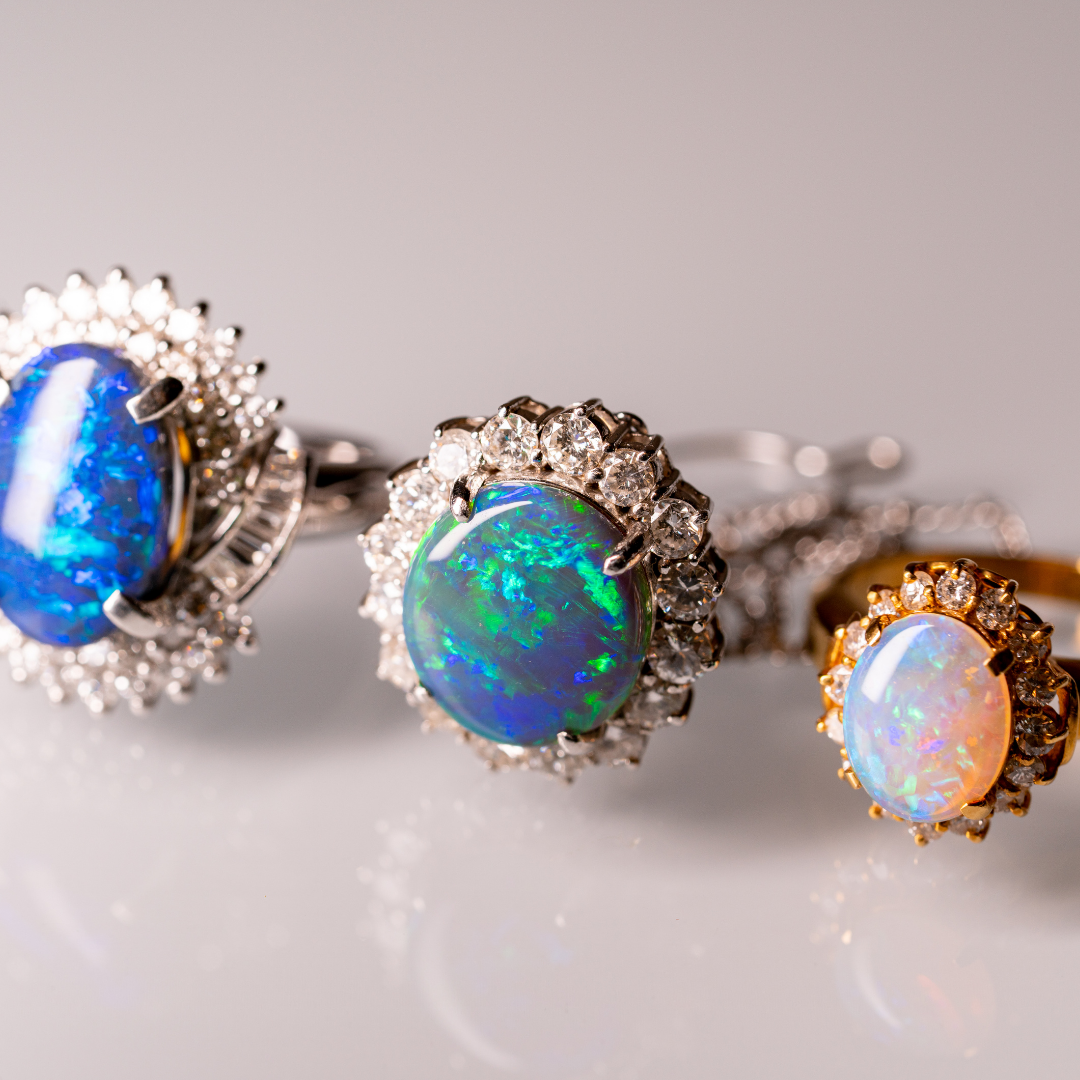
The modern era
from 1800 AD - Australian opals and their global significance
The 19th century marked a turning point in the history of opals when significant deposits were discovered in Australia. These discoveries made Australia the world's leading producer of opals, and the Australian opal became the epitome of this gemstone. The exceptional quality and variety of Australian opals, including the famous black opals, made them a sought-after commodity on the international market. Today, approximately 95% of all opals in the world come from Australia, underscoring the country's importance to the global opal trade.
You can read here why high-quality opals can be found in Australia (Geological conditions and the formation of an opal).
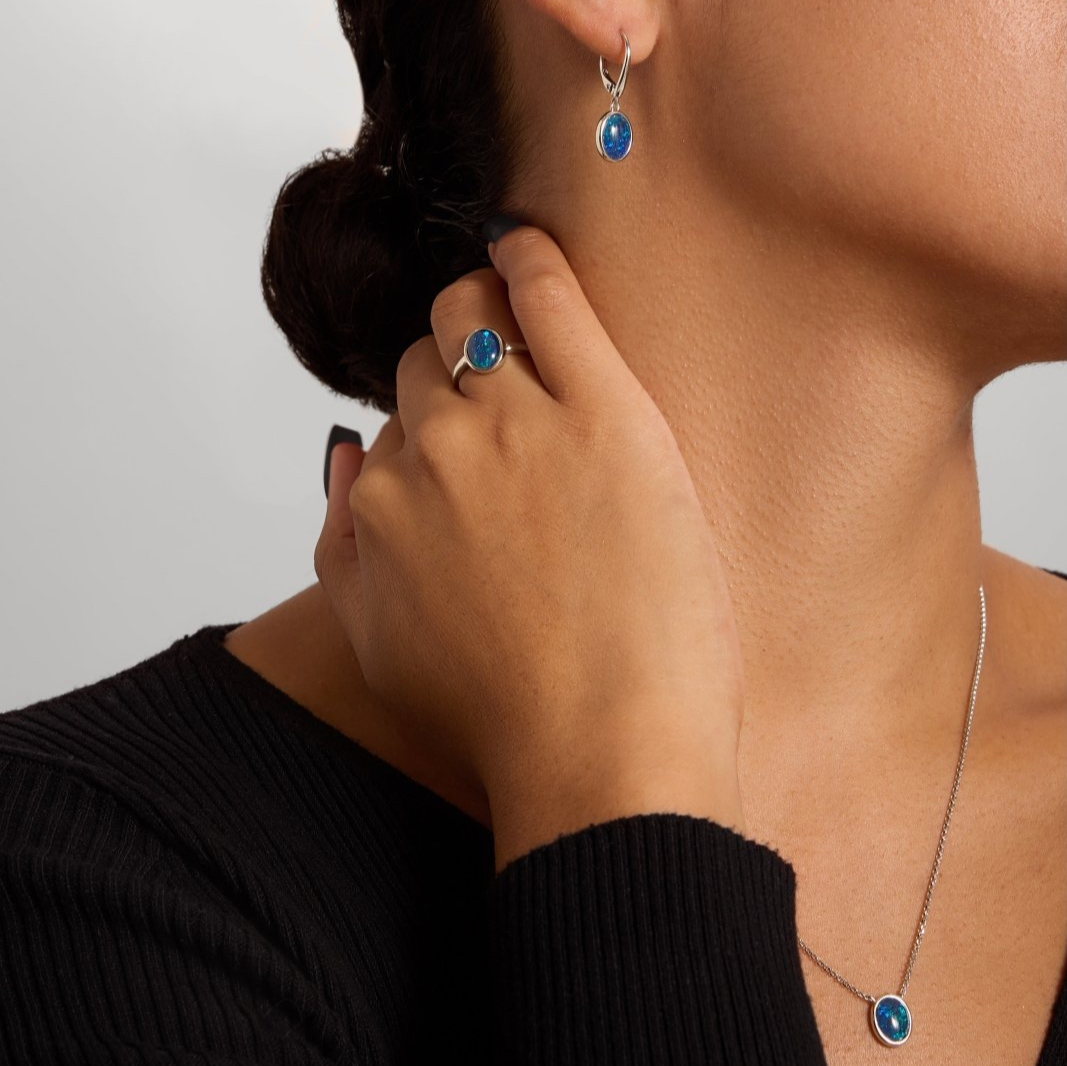
Opals in Pop Culture
From Films to Literature
In modern pop culture, opals have found their place as fascinating gemstones, often admired for their mystical and magical aura. The black opal in particular has made it into the spotlight and has been portrayed in numerous films and books as a symbol of the extraordinary and precious. An outstanding example of this is the film "Uncut Gems " (2019) starring Adam Sandler, in which a rare black opal is at the center of the plot. This film has brought the unique beauty and high value of the opal to a wide audience.
Opals have also played a special role in literature. In the famous "Harry Potter" series, opals are part of the magical world, often associated with magical and mysterious properties. In addition, opals are valued in art, video games and other media for their ability to refract light in dazzling colors, which underlines their aesthetic and symbolic power. Their unique play of colors makes them a popular motif that stimulates the imagination and inspires the creative representation of beauty and magic.
DMAX also regularly shows the famous documentary series " Outback Opal-Hunters ", now with over 8 seasons.
You might also be interested in
Opal jewelry from FAERELLI
Experience the timeless elegance of FAERELLI opal jewelry. Our collections combine the fascinating beauty of opals with exquisite design and masterful craftsmanship. Discover how these unique gemstones are brought to life in stunning pieces of jewelry.
FAERELLI Opal jewelryKnowledge about Opals
Discover the fascinating world of opals - from their origins and the different types of opal to the mining techniques, how they are processed and the physical properties of opals. Find out what makes opal jewelry so special and why these gemstones are among the most beautiful in the world.
About Opals



